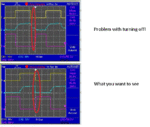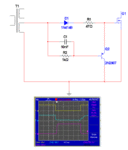zeus_threat
Member level 2
Hi i have built the attached SMPS. I have been able to successfully test it up to 100V with a transformer All waveforms are clean with no ringin or spike. When plugged into 220V the fuse blew up at switch on and both mosfets got shorted GDS. I even added a 0.22R in series with the lower mosfet source and did not measure anything major on low voltages i had to switch the scope to 10 mv range to see a tiny wave form. Any suggestion as to where i could look to sort out the issue? The two 22ohm resistors connected to the main transfo are a pair of 100W lamps that i've used for testing. thanks
Attachments
Last edited:



